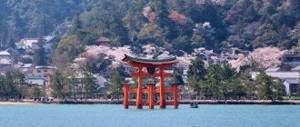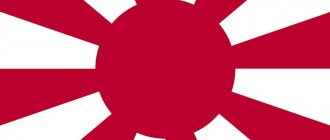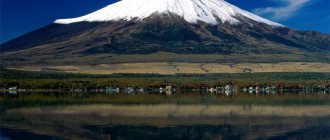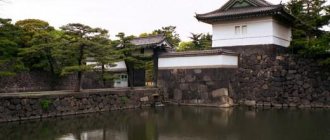Of all the states of the Far East, it is Japan that has always aroused the greatest interest among adventurers and historians around the world. For a long time, this state was just a myth that people retold to each other. However, when the discovery of Japan took place, the fairy tale turned into reality. It should be noted that the history of this country is rich and interesting. Japan occupies a significant place in the world because it is the source of a completely unique culture. In addition, this state is quite strong, politically and economically. This characteristic has been formed over several centuries. Moreover, we can safely say that the strong features of the Japanese state were forged in the heat of numerous battles. However, Japan was not always so powerful. History knows the moment when the land of the rising sun was completely closed from the outside world. This period lasted several centuries, but it was brought to an end, which led to the economic evolution of Japan and the enlightenment of its nation.
Separate world
The island nation of Japan, unlike its Asian neighbors, has been protected from constant enemy invasion throughout history. However, this in no way means that the country was closed to foreign influence, in particular European.
Starting from the 15th century, Portuguese, Spanish, and then English, Dutch and French sailors discovered and actively developed new territories. Following them came missionaries who zealously preached Christianity to the pagan peoples.
In the 16th century, European merchants reached the Far Eastern islands. In the holds of their ships, among various goods, there were also firearms, unknown until that time in the Land of the Rising Sun. Portuguese and Spanish missionaries began their preaching work here, not without success. Thus, the first discovery of Japan by Europeans took place.
Unification of the country
Foreign influence was especially strong on the island of Kyushu. There is a simple explanation for this: local feudal lords, who resisted the unification of the country, counted on foreign help in the internecine struggle. This was justified, since pirates and merchants brought firearms from Europe.
Like many other medieval countries, Japan experienced a period of feudal fragmentation, until in the 16th century there was a tendency towards the creation of a centralized state. By the end of the century, administrative and military power in almost all of Japan was concentrated in the hands of the powerful feudal lord Toyotomi Hideyoshi.
Of course, not all the nobles in the country were happy with this. Therefore, the discovery of Japan by Europeans in the 16th century was very opportune for the feudal lords who resisted centralization. They converted to Christianity, attracted Spanish and Portuguese merchant ships bringing weapons to their ports, and even sent their own embassies to Europe.
Tokugawa Shogunate
After the death of Toyotomi Hideyoshi, a struggle for power began between the feudal lords, from which Tokugawa Ieyasu emerged victorious. In 1603, he was proclaimed shogun - commander in chief. His house dominated until the second, this time forced, opening of Japan. The emperor became a figurehead, and actual power in the state was concentrated in the hands of the shogun.
During the reign of Ieyasu Tokugawa and his son, the unification of the country was completed. And although the division into separate principalities remained, they were not political, but judicial-administrative units. The capital of the united state was the city of Edo - modern Tokyo.
Will there be charters to Japan from Russian regions?
Before air traffic was limited and borders were closed to tourists, charters to Japanese cities were not very popular among Russians due to the high cost and difficulty of obtaining a visa. Charter flights were carried out mainly from Moscow and cities of the Far East:
- Khabarovsk,
- Vladivostok,
- Petropavlovsk-Kamchatsky.
Planes carrying Russians flew to Japanese cities such as Tokyo, Niigata, Osaka, and Okinawa.
Now there is no talk of resuming charters for tourists, since Japan has not announced the opening of the border with Russia. Most likely, you should not expect charters from new Russian regions even after the restoration of air traffic: according to representatives of the tourism industry, Russians will also be able to fly to Japanese cities only from the capital and the Far East.
Sakoku - Japan's policy of self-isolation
Tokugawa Ieyasu knew how to benefit from contacts with foreigners. In 1600, Dutch Protestants arrived in the country. Catholic priests demanded the execution of heretics. However, the far-sighted Tokugawa not only chose to leave them alive, but also brought the Englishman William Adams, the captain of the Dutch ship, closer to him. He became a valuable source of technical and political information. Adams is the only foreigner in history to receive samurai status with the right of personal access to the shogun.
True, at the end of the day, Tokugawa began to be irritated by the infighting and intrigues of the Europeans. Therefore, Christianity was banned in Japan in 1614. His son and successor not only supported the persecution of Christians, but also in the year of his father’s death (1616) issued a decree closing all ports to foreign ships, with the exception of Hirado and Nagasaki.
But even in them, from 1624, Spanish ships were no longer allowed in for supporting Catholic missionaries, and from 1638, access to the ports was closed to Portuguese ships. The British stopped trading with Japan back in 1623. The only ones who retained the right to trade were the Dutch, who participated in the suppression of the uprising of Japanese Christians on the island of Kyushu in 1637-1638.
The final acts of Sakoku's policy were:
- a ban on the construction of ships that could go far to sea;
- a ban on Japanese living in other countries returning to their homeland;
- expulsion of children from mixed marriages from the country.
The Tokugawa shogunate maintained this state of affairs until the discovery of Japan 200 years later.
Reforms 1868–1873
The overthrow of the shogunate was truly a revolutionary event. Reforms 1868-1873 marked the beginning of the transformation of Japan from a feudal country to a capitalist country.
The division of the country into principalities was abolished. Instead, new territorial-administrative units were created - prefectures, subordinate to the imperial government. It was announced the elimination of estates and equality of all before the law. The privileges of the nobility - samurai were abolished and marriages between persons of different classes were allowed. Free trade and freedom of movement were introduced throughout the country. Peasants could cultivate any crops and engage in trade without restrictions. All natural taxes were replaced by monetary ones.
An important transformation was the agrarian reform. It established private ownership of land with the right to buy, sell and mortgage it. Most peasants received small plots of property without redemption payments. However, the high land tax led to the rapid ruin of the small and middle peasantry. By the end of the 19th century. about 70% of peasants lost their land and became tenants. The biggest beneficiaries of the agrarian reform were the village rich, city merchants and moneylenders who turned into landowners.
Military reform had enormous consequences for Japan. The samurai militias were transformed into a regular army, which was subordinate to the imperial government and was recruited on the basis of universal conscription. The samurai played a leading role in the army. Only they had the right to be appointed to officer positions. The basis for the education of soldiers and officers was the samurai code of honor - bushido (the way of the warrior). All this gave the Japanese army a particularly warlike and aggressive character.
Photo of a samurai warrior
Reforms 1868-1873 were moderate and bourgeois in nature. Their significance lay in the fact that they opened the way for the capitalist development of Japan.
Life in isolation
Conscious isolation from foreign influence to a certain extent contributed to the preservation of the feudal system in the country. However, the centralization of the state put an end to the destructive internecine wars and contributed to stability in society.
Only thirty Chinese ships and two Dutch ships had the right to enter Japanese ports annually. They brought small luxury goods that did not have much value. In addition, the crews of foreign ships served as a source of information about life outside the country.
Of course, the policy of self-isolation can hardly be called progressive. However, it was during this period of Japanese history that:
- national drama kabuki;
- haiku poetry;
- the art of growing bonsai - miniature trees;
- wood engraving;
- plebeian novels;
- the Ura Senke school of tea ceremony, which still exists today.
But the world learned about all these cultural achievements only after the discovery of Japan in the middle of the 19th century.
Revival of the idea of Imperial power
To calm down their subjects, the authorities decided to instill an idea that would justify the hardships they endured, discipline them, and prepare them for achievements in the name of their goals. This idea became filial devotion to the emperor. The long-forgotten emperor was turning into a national patriotic symbol. An ideology was born based on devotion to the emperor, whose power was sanctified by divine origin.
This idea became the basis for the official cult introduced by the government, called State Shinto. He gives a person one right, which is also a duty - to be loyal to the emperor, and, if necessary, to die for him. Subsequently, this idea played an important role in the “Japanese economic miracle.”
Finished works on a similar topic
Coursework Formation of a new Japanese Empire 450 ₽ Abstract Formation of a new Japanese Empire 220 ₽ Examination Formation of a new Japanese Empire 240 ₽
Receive completed work or specialist advice on your educational project Find out the cost
Contacts with Russian sailors
The first successful diplomatic mission of Russia is considered to be the expedition of Lieutenant Adam Laxman, organized by order of Catherine the Great in the fall of 1792. True, for a number of reasons its results were not consolidated at that time. Therefore, when in 1804 the Russian embassy headed by Rezanov arrived in Nagasaki, a very hostile reception awaited it. All proposals to establish interstate relations and trade were rejected by Shogun Ienari.
The Napoleonic War and rivalry with Great Britain subsequently diverted the attention of the Russian government from attempts to establish foreign policy ties with Japan in the 19th century, or more precisely in its first half. Despite this, in the 1940s and 1950s Russia closely followed the United States' growing interest in opening up Japan, even by force of arms.
“Discovery” of Japan by Europeans
The territory of the Japanese state consisted of small and large islands. In the 19th century The Japanese inhabited three large islands: Honshu, Kyushu and Shikoku. In the north of. The Ainu lived in Hokaido, but the Japanese gradually replaced them.
At the end of the 18th - first half of the 19th centuries. The USA, England, France, Russia tried several times to “break” the “closed doors” of Japan. So, in 1791-1794. The United States sent seven expeditions to the shores of Japan. However, they were all rebuffed by the Tokugawa shogunate and returned back with nothing. Trying to establish trade relations with Japan, Russia in 1792-1793. sent a diplomatic vessel under the command of A. Laxman. The Japanese government did not allow official relations with Russia. The same fate befell the Russian diplomatic mission, headed by N.P. Rezanov. The United States decided to forcefully influence Japan's “closed door” policy. In 1852, US Commodore M. Perry, arriving in Japan, demanded that an agreement be signed. He said a response from Japanese authorities should be received in a year, when the American ship returns from China. If the answer is negative, the United States warned of the use of military force. In connection with American threats, the movement against the power of the shogunate intensified in the country.
On February 13, 1854, Perry returned to Japan. During negotiations, he threatened military force. The shogunate, given the crisis in the country and financial difficulties, was afraid of a war with the United States, and on March 13, 1854, an agreement was signed between Japan and America in Kanagawa. According to him, the ports of Shimoda and Hakodate were opened to American ships. Thus ended the Japanese “closed door” policy that lasted 215 years. After this treaty, other powers began to sign agreements with Japan. Thus, in 1854, Anglo-Japanese agreements were signed, in 1855 - Russian-Japanese agreements, in 1856 - Dutch-Japanese agreements, in 1858 - French-Japanese agreements. Citizens of these states received rights protected in a special form. The Japanese government granted them trading privileges. In a word, these agreements turned out to be forced and unfair for Japan.
The “discovery” of Japan led to some complications. The shogunal government demonstrated its weakness in foreign policy. Rich groups took advantage of this and intensified the fight against the shogunate. Japan's trade relations with Western countries were unfavorable for it and led to an economic crisis. The country was flooded with cheap European goods, which local traders and industrialists could not resist. The balance in trade was disrupted, gold and silver went out of circulation and ended up in the pockets of foreign traders. The price of precious metals has increased sharply. The peasants' source of income disappeared. The Japanese people considered the shogunate to be the culprit of these disasters, which entered into unfair agreements with foreigners. Widespread popular uprisings were directed against the shogunate and foreigners. The main demand of the dissatisfied was the restoration of the emperor's power.
The Japanese especially revered the emperor and considered him the messenger of the Sun God - Amaterasu. According to the Japanese religion - Shintoism, the dynasty of emperors did not disappear, they were simply deprived of power. The emperor and his family lived separately in Kyoto. He did not communicate with princes and did not have dependent vassals. Frightened by US Commodore Perry, the shogun asked the emperor for advice. The Emperor (Mikado) advised against bowing down to foreigners. However, the shogun neglected this opinion, which turned out to be beneficial to his opponents.
Arrival of the Barbarians
The War between Mexico and the United States (1846-1848) ended with the annexation of California to the United States, which gave the American fleet access to the Pacific Ocean. A lucrative whaling business flourished in its waters at that time. The Americans believed, and not without reason, that Japanese ports were an ideal place where their ships could stop for repairs and replenish food supplies.
1853 is considered the year of the discovery of Japan, and a violent one, since it was then that the events mentioned at the beginning of the article took place. The military squadron, commanded by Commodore Perry, threatening to shed blood if necessary, forced the shogun to listen to the demands of the American side. The Japanese called these events the “arrival of the barbarians.”
A year later Perry M. returned accompanied by more ships. He brought miniature copies of the achievements of Western civilization: a telegraph, a railroad, a collection of weapons, a telescope, an iron stove and other gifts. On this visit, Perry concluded the friendship agreement desired by the American government, which was replaced a few years later by a trade agreement. Similar documents were soon signed between Japan and other countries, including Russia.
Who discovered Japan - when, and how and why was Japan discovered? — 22 answers
In the Schools section, the question is when, how and why was Japan discovered? asked by the author Elena Komova, the best answer is It has not yet been established who the first Portuguese were who landed on the coast of Japan, and when it was. Some sources name Antonio do Mota and Francisco Zeimota, who, fleeing a typhoon, sought shelter off an unfamiliar coast in 1542. Others consider Fernand Mendes Pinto to be the pioneer, who appeared in 1543 near Fr. Tanegashima.By that time, Portugal had extensive experience in developing foreign lands, and it had something to offer the Japanese. The superbly equipped ships and, unusual for the Japanese at that time, firearms also aroused interest. In 1549, the Jesuit Francis Xavier arrived in Japan. In two years, the missionaries managed to convert about 800 people to Christianity. Rapid activity and expansion of spheres of influence instilled confidence in the Portuguese. The feudal lords who converted to Christianity, under their influence, began to expel Buddhist monks. And immediately a reaction of rejection followed - decrees appeared prohibiting the adoption of Christianity, and then an order for all preachers to leave Japan. The Dutch, supporting the Japanese in the fight against Portugal, drove her out of the country. In 1637, a Christian uprising began in Shimabara, which was brutally suppressed. The era of sakoku began. Sakoku was Japan's foreign policy of self-isolation, which lasted from 1641 to 1853. Since 1636, the Japanese, under pain of death, were forbidden to leave their country or build large ships. In 1638, all Portuguese were expelled from the country - all contacts were monopolized by the Dutch. Chinese and Korean ships are allowed to enter Nagasaki twice a year. A ban was introduced on the distribution of rangaku (a body of European scientific knowledge) that entered Japan through the Dutch trading post in Nagasaki. In 1825, a decree was issued requiring that they open fire on any Western ship that appeared off the coast of Japan. In 1853, Japan was opened to the West by Commodore Perry, who, under the threat of shelling the capital, forced Japan to conclude a treaty that opened it to foreign trade and put an end to the country’s self-isolation. A in 1927 on the island. In Tanegashima, a monument was opened in honor of the Portuguese discoverers.
Source: japan-tur.blogspot.com/
Answer from Neurosis[guru]Open? By whom? :))))))))))))))))) Do you have any idea when people settled in Japan, and when people appeared where you live now :)))))))))) ))))))) . Who discovered whom? According to the results of archaeological research, the Japanese archipelago was inhabited by people during the late Paleolithic period. In the Paleolithic, the Earth was bound by glaciers, and the water level was 100 m lower than today. Japan was not yet an archipelago, but was connected by dry isthmuses to the mainland. The Inland Sea of Japan was a spacious valley. The glaciers did not reach East Asia, but their influence was felt on the climate. Japan was part of the Asian steppe ecozone, rich in various herbs. Mammoths, Naumann's elephants, big-horned deer and other animals were found here. The first signs of settlement of the Japanese archipelago appeared around the 40th millennium BC. e. with the beginning of the Japanese Paleolithic, which lasted until the 12th millennium BC. e The population of ancient Japan was engaged in hunting and gathering, making the first rough stone tools.
22oa.ru
Consequences of the opening of Japan
The collapse of the lockdown policy had both positive and negative consequences for the country. The first historians include:
- overthrow of the shogunate regime;
- reforms in the social and military sphere, as well as in economics and politics.
Such global transformations allowed Japan in the 19th century to quickly overcome the gap with the developed countries of the world in the military-technical field, which gave it the opportunity to achieve a revision of previously imposed trade agreements.
The latter provoked the massive ruin of Japanese artisans, whose products could not compete with cheaper factory-made goods. Researchers list other negative consequences of the country’s opening:
- depreciation of local currency;
- rising prices;
- strengthening of feudal oppression in the countryside.
As a result, the reforms carried out, on the one hand, helped Japan to avoid political dependence on Western states, and on the other, to become one of the leading countries in Asia.











